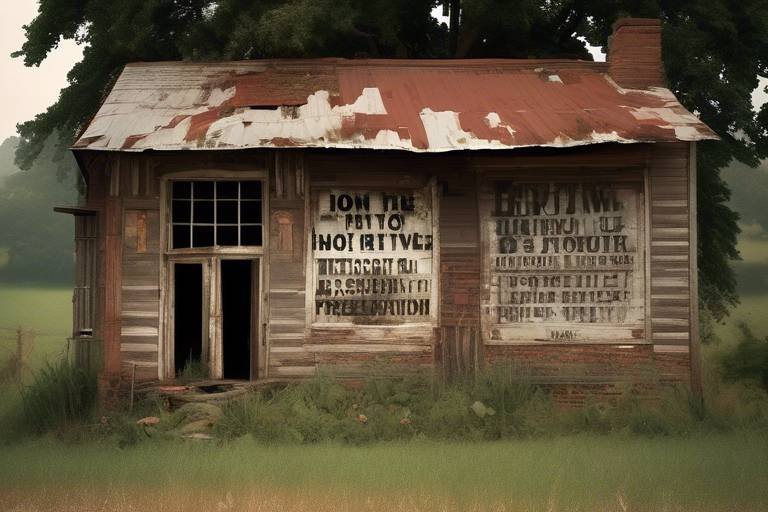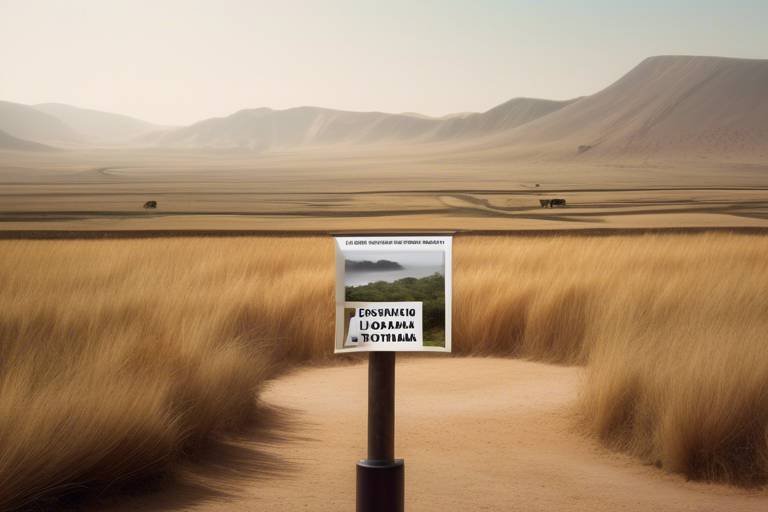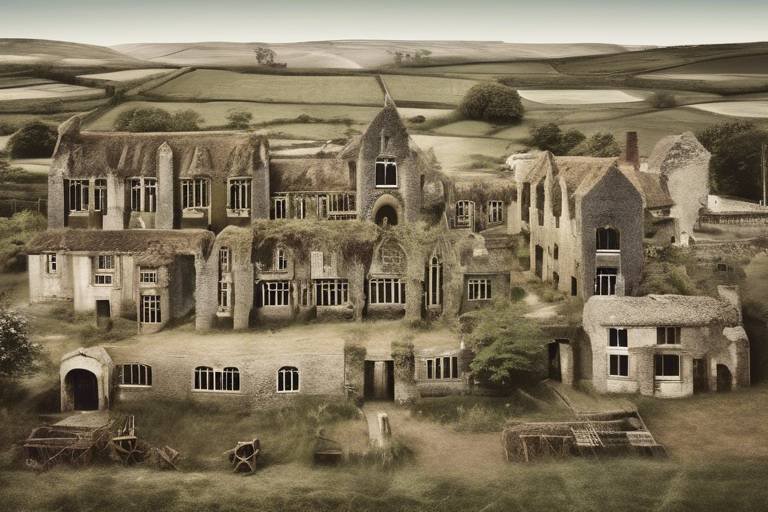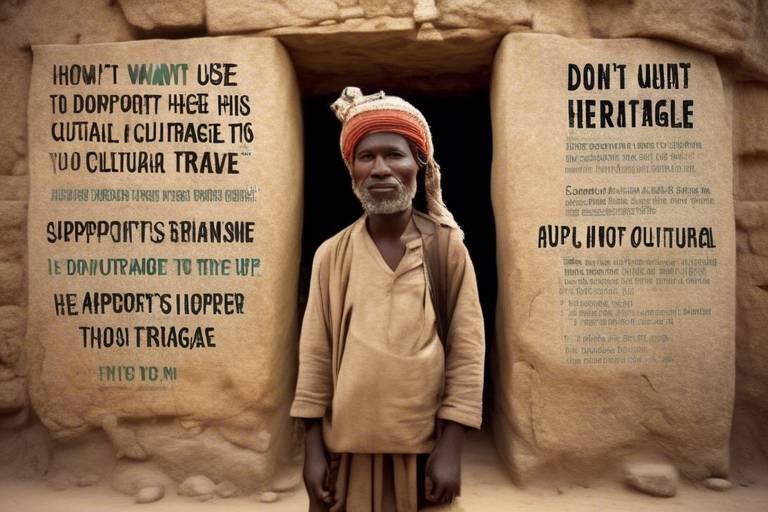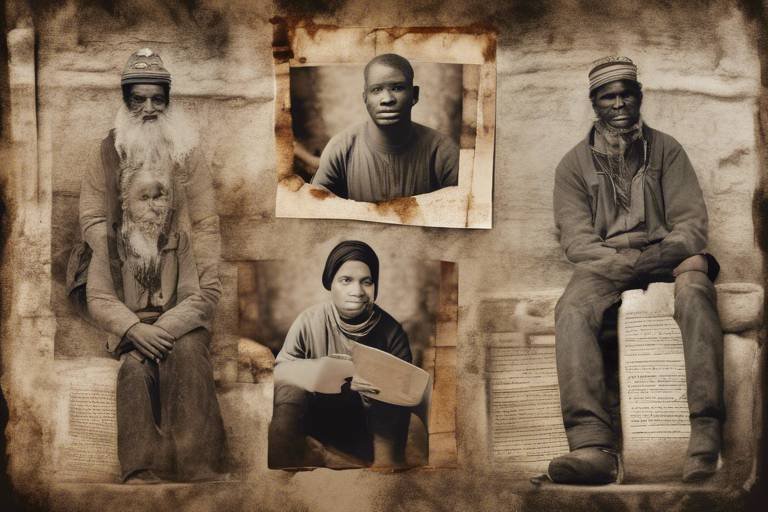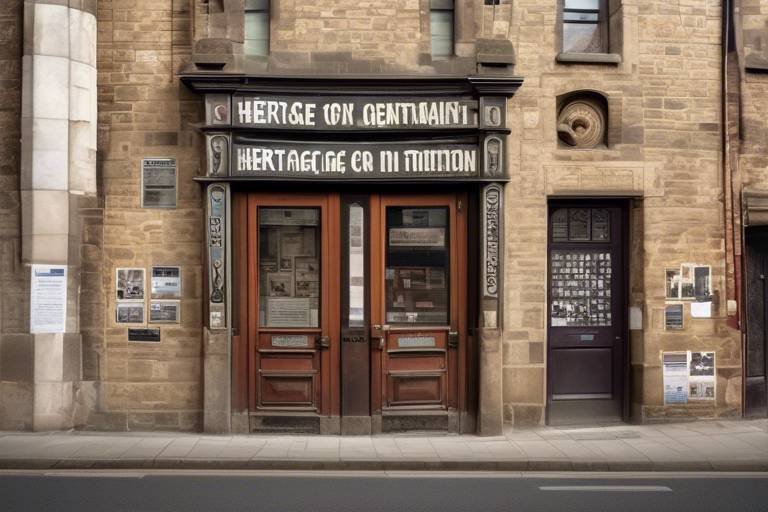How Climate Change Challenges Heritage Conservation Efforts
Climate change poses a significant challenge to heritage conservation efforts, impacting cultural and historical sites in various ways. The increasing frequency and intensity of natural disasters, such as hurricanes, wildfires, and floods, are threatening the integrity of heritage sites worldwide. These environmental threats are putting iconic landmarks, ancient ruins, and architectural marvels at risk of irreversible damage, highlighting the urgent need for proactive conservation measures.
One of the major consequences of climate change is the rise in sea levels, which poses a direct threat to coastal heritage sites. Erosion, flooding, and saltwater intrusion are endangering historical structures and artifacts located near shorelines. The delicate balance between preserving these sites and adapting to the changing environment is a complex challenge that heritage conservationists are grappling with.
Extreme weather events, fueled by climate change, are also causing significant damage to architectural structures and monuments. The resilience of these historical buildings is being tested as they face the onslaught of powerful storms, heatwaves, and other weather-related hazards. Efforts to reinforce and protect these structures are crucial in ensuring their survival for future generations.
Furthermore, the loss of biodiversity due to climate change is affecting cultural landscapes and traditional practices associated with heritage sites. The disappearance of plant and animal species essential to these ecosystems not only alters the physical environment but also disrupts the cultural significance and spiritual connections tied to these places. Conservation efforts must address both the tangible and intangible aspects of heritage to safeguard their authenticity and value.
Archaeological sites are particularly vulnerable to the impacts of extreme weather conditions, leading to erosion, soil degradation, and the potential loss of invaluable artifacts and historical information. The fragility of these sites requires innovative strategies for protection and monitoring to prevent irreversible damage and ensure the preservation of our shared human history.
Preserving intangible cultural heritage, such as traditional knowledge, rituals, and languages, presents unique challenges in the face of climate change-induced disruptions. The transmission of cultural practices and beliefs from one generation to the next is at risk as communities struggle to adapt to changing environmental conditions. Balancing the conservation of tangible heritage with the safeguarding of intangible cultural expressions requires a holistic approach that engages local communities and fosters sustainable practices.
Community engagement plays a vital role in heritage conservation efforts, fostering a sense of ownership and responsibility among local residents. By promoting sustainable practices, resilience-building initiatives, and adaptation strategies, communities can actively contribute to the preservation of their cultural heritage in the face of climate change challenges. Empowering communities to take action not only enhances the effectiveness of conservation efforts but also fosters a deeper connection to their heritage.
In order to ensure the long-term resilience of heritage sites in the face of climate change, it is essential to incorporate climate resilience into heritage conservation policies and practices. By implementing policy recommendations and best practices that prioritize adaptation, mitigation, and sustainable management, heritage conservationists can safeguard cultural heritage for future generations. Balancing the need for preservation with the realities of a changing climate requires a proactive and collaborative approach that values the irreplaceable cultural treasures of our past.

Increased Risk of Natural Disasters
Climate change is amplifying the frequency and intensity of natural disasters, posing a significant threat to heritage conservation efforts worldwide. The escalating temperatures and shifting weather patterns are contributing to a surge in extreme events like hurricanes, floods, wildfires, and storms. These disasters not only endanger the safety of communities but also jeopardize the preservation of cultural and historical sites that hold immense significance.
The vulnerability of heritage sites to natural disasters has become a pressing concern, requiring proactive measures to mitigate risks and enhance resilience. The increasing occurrence of these calamities puts iconic landmarks, ancient ruins, and archaeological treasures at a heightened peril of destruction. The valuable artifacts, structures, and landscapes that embody our shared history and cultural identity are at stake due to the escalating threat of climate-induced disasters.
Furthermore, the impact of natural disasters on heritage conservation extends beyond physical damage, encompassing socio-economic repercussions and long-term implications. The disruption caused by these events can lead to the displacement of communities, loss of livelihoods, and disruption of traditional practices associated with cultural heritage sites. The interplay between climate change and natural disasters poses a multifaceted challenge that demands a comprehensive and coordinated response to safeguard our heritage for future generations.

Sea Level Rise Threatens Coastal Sites
Sea level rise, a direct consequence of climate change, poses a significant threat to coastal heritage sites around the world. The gradual increase in sea levels is causing erosion, flooding, and saltwater intrusion, endangering the integrity of these valuable cultural and historical locations. Coastal sites, such as ancient ruins, lighthouses, and historic buildings, are particularly vulnerable to the encroaching waters, putting them at risk of permanent damage or even complete submersion.
One of the primary challenges faced by conservationists and heritage experts is developing effective strategies to mitigate the impact of sea level rise on coastal sites. Implementing coastal defense mechanisms, such as seawalls, dikes, and beach nourishment, can help protect these vulnerable locations from erosion and flooding. Additionally, incorporating sustainable land-use practices and promoting ecosystem restoration can enhance the resilience of coastal areas against rising sea levels.
Furthermore, collaboration between local communities, government agencies, and environmental organizations is crucial in addressing the threats posed by sea level rise to coastal heritage sites. Engaging with stakeholders to raise awareness about the importance of preserving these sites and involving them in decision-making processes can lead to more effective conservation efforts. By fostering a sense of shared responsibility and stewardship, communities can work together to safeguard their cultural and historical heritage from the impacts of climate change.

Damage to Architectural Structures
Exploring the impact of climate change on heritage conservation and the challenges faced in preserving cultural and historical sites in the face of environmental threats.
Architectural structures, monuments, and historic buildings are facing significant challenges due to the increasing frequency and intensity of extreme weather events caused by climate change. Hurricanes, wildfires, floods, and storms are wreaking havoc on these structures, leading to severe damage and deterioration. The architectural integrity of these heritage sites is at risk, requiring urgent attention and preservation efforts to prevent irreversible harm.
Historic buildings are particularly vulnerable to the impacts of climate change, with rising temperatures and shifting weather patterns accelerating the decay of materials and weakening structural foundations. The intricate details and craftsmanship of these structures are being eroded by the forces of nature, threatening to erase centuries of architectural heritage.
In response to these threats, conservationists and experts are implementing innovative strategies to protect architectural structures from climate-related damage. Advanced monitoring systems, protective coatings, and sustainable restoration techniques are being employed to strengthen the resilience of heritage buildings and ensure their longevity in the face of environmental challenges.
Collaborative efforts between conservation organizations, local communities, and governmental agencies are crucial in safeguarding architectural heritage from the impacts of climate change. By raising awareness, promoting sustainable practices, and investing in adaptive measures, we can preserve these architectural marvels for future generations to admire and cherish.

Loss of Biodiversity Affects Cultural Landscapes
Exploring the impact of climate change on heritage conservation and the challenges faced in preserving cultural and historical sites in the face of environmental threats.
When we delve into the intricate relationship between biodiversity and cultural landscapes, we uncover a profound connection that is often overlooked. The loss of biodiversity, driven by climate change, not only affects the natural world but also reverberates through the cultural tapestry of societies worldwide. Imagine a painting where each color represents a species, and as some colors fade away, the vibrancy and richness of the artwork diminish. Similarly, as species disappear due to environmental changes, cultural landscapes lose their essence and vitality.
One of the most significant impacts of biodiversity loss on cultural landscapes is the disruption of traditional practices and knowledge systems that have been intricately linked to nature for generations. Indigenous communities, for example, rely on diverse ecosystems for their livelihoods, spiritual beliefs, and cultural identity. When these ecosystems degrade due to climate change-induced biodiversity loss, the very foundation of these cultural practices is shaken, putting at risk the preservation of intangible heritage that is deeply rooted in the natural world.
Furthermore, the decline in biodiversity can lead to the extinction of plant and animal species that hold cultural significance for various communities. These species often play crucial roles in rituals, ceremonies, and traditional medicines, forming an integral part of cultural heritage. As these species disappear, cultural practices associated with them face the threat of being lost forever, eroding the diversity and richness of cultural landscapes.
Moreover, the interconnectedness between biodiversity and cultural landscapes extends to the aesthetic value of heritage sites. Ecosystems teeming with diverse flora and fauna contribute to the beauty and uniqueness of cultural landscapes, attracting visitors and serving as sources of inspiration for artists, writers, and creators. As biodiversity diminishes, these landscapes lose their allure and character, diminishing the overall cultural experience for both locals and tourists.
In the face of such challenges, conservation efforts must not only focus on preserving physical structures and artifacts but also prioritize the protection and restoration of biodiversity within cultural landscapes. By adopting holistic approaches that integrate ecological conservation with cultural heritage preservation, communities can enhance the resilience of these landscapes against the impacts of climate change, ensuring that future generations inherit a world rich in both natural and cultural diversity.

Threats to Archaeological Sites from Extreme Weather
Archaeological sites hold invaluable insights into our past, offering a glimpse into ancient civilizations and historical events. However, these sites are increasingly under threat from extreme weather conditions exacerbated by climate change. The vulnerability of archaeological sites to extreme weather poses significant risks, including erosion, soil degradation, and the potential loss of valuable artifacts and historical information.
Extreme weather events, such as intense rainfall, droughts, and high winds, can accelerate the deterioration of archaeological remains. Erosion caused by heavy rainfall can expose fragile artifacts to the elements, leading to their decay. Similarly, prolonged droughts can cause soil desiccation, weakening the structural integrity of archaeological sites and making them more susceptible to damage.
Furthermore, high winds associated with storms and hurricanes can physically damage archaeological structures, monuments, and excavation sites. The impact of extreme weather on archaeological sites goes beyond immediate physical damage, as it can also disrupt ongoing excavations, research efforts, and conservation activities, hindering our understanding of the past.
To address the threats posed by extreme weather to archaeological sites, proactive measures must be taken. Implementing proper site management practices, such as erosion control measures, site stabilization techniques, and monitoring systems, can help mitigate the impact of climate-induced weather events on archaeological heritage.
Additionally, raising awareness about the importance of preserving archaeological sites in the face of climate change is crucial. Engaging local communities, archaeologists, heritage conservationists, and policymakers in collaborative efforts to protect and conserve these sites is essential for their long-term sustainability and resilience.
By recognizing the threats posed by extreme weather to archaeological sites and taking proactive steps to safeguard these invaluable cultural assets, we can ensure that future generations have the opportunity to learn from and appreciate our shared heritage.

Challenges in Preserving Intangible Cultural Heritage
Exploring the impact of climate change on heritage conservation and the challenges faced in preserving cultural and historical sites in the face of environmental threats.
Preserving intangible cultural heritage presents unique challenges in the context of climate change. Unlike tangible heritage, which includes physical structures and artifacts, intangible heritage encompasses traditions, rituals, languages, and knowledge passed down through generations. The dynamic nature of intangible cultural heritage makes it particularly vulnerable to environmental disruptions and socio-economic changes.
One of the primary challenges in safeguarding intangible cultural heritage is the loss of traditional knowledge and practices due to climate-related events. Extreme weather conditions, such as droughts, floods, and wildfires, can directly impact communities practicing traditional rituals or agricultural techniques, leading to the erosion of cultural identity and heritage.
Furthermore, the globalization and modernization processes accelerated by climate change can threaten the transmission of intangible heritage within communities. As younger generations move towards urban areas or adopt contemporary lifestyles, there is a risk of traditional practices fading away, resulting in the loss of cultural diversity and richness.
Another significant challenge lies in the documentation and preservation of intangible cultural heritage in digital formats. While technology offers new opportunities for recording and sharing cultural practices, there are concerns regarding the authenticity and integrity of digital representations compared to oral traditions or tangible artifacts. Balancing the use of digital tools with respect for traditional modes of transmission is crucial in ensuring the continuity of intangible heritage.
Community engagement plays a vital role in addressing the challenges of preserving intangible cultural heritage. Empowering local communities to actively participate in heritage conservation efforts, revitalizing traditional practices, and promoting intergenerational knowledge transfer are essential steps towards safeguarding intangible heritage in the face of climate change.
Moreover, fostering partnerships between governments, cultural institutions, and indigenous communities is key to developing sustainable strategies for the protection and promotion of intangible cultural heritage. By incorporating indigenous perspectives and practices into conservation initiatives, stakeholders can enhance resilience and adaptability to environmental challenges while honoring diverse cultural expressions.
In conclusion, preserving intangible cultural heritage in the era of climate change requires a holistic approach that values traditional knowledge, fosters community resilience, and embraces innovation in documentation and transmission methods. By recognizing the interconnectedness of cultural heritage and environmental sustainability, we can ensure the preservation of diverse cultural traditions for future generations.

Community Engagement and Sustainable Practices
Exploring the impact of climate change on heritage conservation and the challenges faced in preserving cultural and historical sites in the face of environmental threats.
Community engagement plays a vital role in heritage conservation efforts, fostering a sense of ownership and responsibility among local residents towards their cultural heritage. By involving communities in decision-making processes and conservation projects, a deeper connection and appreciation for heritage sites are cultivated. Sustainable practices, such as implementing eco-friendly initiatives and promoting resource efficiency, are essential in mitigating the environmental impact of conservation activities. These practices not only contribute to reducing the carbon footprint but also help in preserving the authenticity and integrity of heritage sites for future generations.

Policy Recommendations for Climate-Resilient Heritage Conservation
Policy recommendations play a crucial role in ensuring climate-resilient heritage conservation practices. To effectively protect cultural and historical sites from the impacts of climate change, policymakers must prioritize the integration of climate resilience into heritage conservation policies and planning strategies. One key recommendation is the implementation of comprehensive risk assessments to identify vulnerable heritage sites and develop tailored adaptation measures.
Furthermore, promoting interdisciplinary collaboration between heritage conservation experts, climate scientists, and local communities is essential for fostering innovative solutions to mitigate climate risks. Encouraging the adoption of sustainable practices, such as green infrastructure and energy-efficient technologies, can enhance the resilience of heritage sites against environmental threats.
Policy frameworks should also emphasize the importance of community engagement in heritage conservation efforts, empowering local stakeholders to actively participate in decision-making processes and conservation initiatives. By fostering a sense of ownership and stewardship among communities, policymakers can ensure the long-term sustainability of heritage sites in the face of climate change challenges.
Additionally, investing in capacity-building programs and knowledge sharing initiatives can enhance the adaptive capacity of heritage conservation practitioners and equip them with the necessary tools to address climate-related risks effectively. By prioritizing education and training in climate-resilient practices, policymakers can foster a culture of preparedness and proactive conservation efforts within the heritage sector.
Incorporating climate resilience into heritage conservation policies requires a holistic approach that considers the interconnectedness of environmental, social, and cultural factors. By adopting a forward-thinking and adaptive mindset, policymakers can safeguard cultural heritage for future generations and ensure its continued relevance and significance in a rapidly changing world.
Frequently Asked Questions
- What are the main challenges faced in heritage conservation due to climate change?
The main challenges in heritage conservation due to climate change include increased risk of natural disasters, sea level rise threatening coastal sites, damage to architectural structures from extreme weather events, loss of biodiversity affecting cultural landscapes, threats to archaeological sites, challenges in preserving intangible cultural heritage, and the need for community engagement and sustainable practices.
- How does climate change impact the preservation of historical and cultural sites?
Climate change impacts the preservation of historical and cultural sites by causing damage through natural disasters, sea level rise, extreme weather events, loss of biodiversity, and disruptions to intangible cultural heritage. These environmental changes pose significant threats to the sustainability and longevity of heritage sites worldwide.
- What role does community engagement play in heritage conservation efforts?
Community engagement plays a crucial role in heritage conservation efforts by fostering a sense of ownership and responsibility among local communities towards preserving their cultural heritage. By involving community members in conservation initiatives, sustainable practices can be implemented, resilience can be built, and adaptation strategies can be developed to mitigate the impacts of climate change on heritage sites.
- How can policy recommendations help in achieving climate-resilient heritage conservation?
Policy recommendations are essential for integrating climate resilience into heritage conservation practices. By implementing policies that prioritize climate adaptation, planning, and management, heritage sites can be better protected against the adverse effects of climate change. These recommendations aim to ensure the safeguarding of cultural heritage for future generations.


